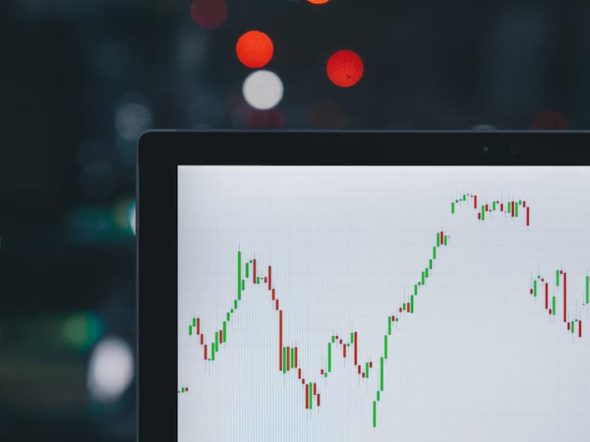In today's fast-paced trading landscape, traders are increasingly turning to automated solutions to execute their strategies efficiently. Trading bots, powered by algorithms, offer a range of advantages such as 24/7 trading, speed, and emotionless decision-making.
However, before diving into the world of trading bots, it's crucial to understand the costs involved and how to choose the right option for your trading needs. In this comprehensive guide, we will explore the intricacies of trading bot costs, their functionality, and provide valuable insights into using them effectively.
3Commas will help make an automated crypto trading for you.
Trading Bots
A trading bot is a software program that uses predefined rules and algorithms to execute trades automatically. These bots monitor market conditions, analyze data, and make trading decisions based on predetermined parameters.
They can be programmed to execute trades on various exchanges, asset classes, and timeframes. Here's a breakdown of how trading bots work:
1. Market Monitoring: Trading bots continuously scan the market, analyzing price movements, trading volumes, and other relevant indicators.
2. Algorithmic Trading: Bots employ algorithms to interpret the collected data and identify potential trading opportunities or patterns.
3. Trade Execution: When the predefined conditions are met, the bot automatically executes trades, including buying, selling, or even complex strategies like arbitrage.
4. Risk Management: Advanced trading bots incorporate risk management features to protect against sudden market fluctuations or unexpected events.

Advantages and Disadvantages of Using Trading Bots
Trading bots have pros and cons that traders should consider. The pros include 24/7 trading, speed and efficiency, and emotionless trading decisions.
On the other hand, the cons include high setup costs, the risk of malfunctions leading to trading errors, and over-reliance on technology, neglecting the human element of trading.
Cost Elements of Trading Bots
The cost of trading bots varies depending on several factors. Let's explore the key cost elements involved:
Purchasing Pre-made Bots
1. One-time Fee: Some pre-made trading bots are available for purchase with a fixed one-time fee. The cost can range from a few hundred to several thousand dollars, depending on the complexity and functionality of the bot.
2. Additional Licenses: Some bot providers charge additional fees for multiple exchange support or extended functionality.
Subscription-based Bots
1. Monthly/Annual Subscription: Many trading bots offer subscription-based pricing, with fees ranging from tens to hundreds of dollars per month or year.
2. Tiered Pricing: Some providers offer different subscription tiers, each with varying features and pricing.
Developing Custom Bots
Development Costs. Building a custom trading bot involves hiring developers or utilizing coding resources. Costs can vary significantly based on complexity, features, and the experience of the developers involved.
Ongoing Maintenance. Custom bots require regular maintenance, bug fixes, and updates, which can result in additional costs.
Cost of Maintenance and Updates
Support and Upgrades. Trading bot providers may charge fees for ongoing technical support, regular updates, and new feature releases.
Data and Exchange Fees. Some trading bot platforms require access to market data feeds or exchange APIs, which may involve additional costs.
Potential Hidden Costs
1. VPS Hosting: To ensure uninterrupted operation, bots often require virtual private server (VPS) hosting, which may incur additional monthly expenses.
2. Backtesting and Historical Data: Acquiring historical data for backtesting purposes may involve purchasing or subscribing to data services.

How to Use a Trading Bot
To make the most of a trading bot, it's essential to follow a systematic approach. Here are the key steps to consider:
Choosing the Right Trading Bot
Research. Explore different trading bot options, their features, reputation, and user reviews to find one that aligns with your trading style and goals.
Demo Accounts. Some bot providers offer demo accounts, allowing you to test the bot's functionality and performance before making a commitment.
Setting Up the Trading Bot
Exchange Integration. Connect your trading bot to the desired cryptocurrency exchanges or platforms.
Configuration. Set your preferred trading parameters, including risk tolerance, trade size, and indicators to be used.
Defining Your Trading Strategy
Backtesting. Utilize historical data to test your trading strategy with the bot, making necessary adjustments to optimize performance.
Risk Management. Implement appropriate risk management measures, such as stop-loss orders and position sizing rules.
Monitoring and Adjusting Your Bot
Regular Monitoring. Keep a close eye on the bot's performance, ensuring it aligns with your expectations and the market conditions.
Fine-tuning. Adjust your trading parameters as needed based on market trends and your evolving strategy.
Factors to Consider When Investing in a Trading Bot
When evaluating trading bot options, consider the following factors:
- Financial Budget: Determine your budget and assess the cost of the bot, ongoing fees, and potential hidden expenses.
- Trading Strategy and Goals: Ensure the bot aligns with your preferred trading style, whether it's scalping, swing trading, or long-term investing.
- Risk Management: Evaluate the bot's risk management capabilities and whether it allows you to set stop-loss orders and implement other risk control measures.
- Technical Support: Research the bot provider's reputation, customer support availability, and responsiveness to ensure timely assistance when needed.
Conclusion
Trading bots can be powerful tools for traders looking to streamline their strategies and capitalize on market opportunities.
However, it's essential to consider the costs involved and choose a bot that suits your trading goals and budget.
